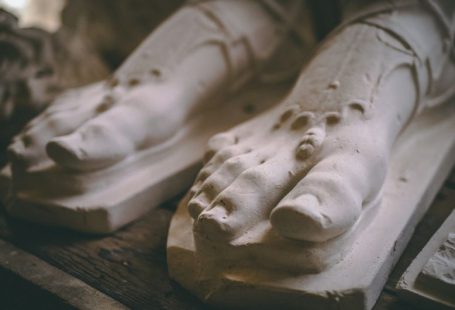Wood carving is a rewarding and intricate art form that has been practiced for centuries. Whether you are a seasoned woodworker or a beginner looking to explore the craft, understanding the importance of grain direction in wood carving is crucial to achieving successful results. The direction in which the grain of the wood runs plays a significant role in the carving process, influencing the ease of carving, the final appearance of the piece, and its overall stability.
**Grain Direction Basics**
Before delving into the importance of grain direction in wood carving, it is essential to understand what the term “grain” refers to in woodworking. The grain of wood refers to the alignment of its fibers, which can vary depending on the species of wood and how a piece of wood is cut. Wood can be categorized into two main grain types: straight grain and irregular grain. Straight grain wood has fibers that run parallel to each other, making it easier to carve and resulting in a more uniform appearance. On the other hand, irregular grain wood has fibers that run in multiple directions, making it more challenging to carve and potentially leading to tear-out or splintering.
**Impact on Carving Ease**
One of the primary reasons why grain direction is crucial in wood carving is its direct influence on the ease of carving. When carving against the grain, where the cutting edge of the tool goes opposite to the direction of the wood fibers, the process becomes significantly more difficult. The fibers can easily splinter or tear out, leading to a rough finish and potential damage to the piece. Conversely, carving with the grain, where the cutting edge follows the direction of the wood fibers, results in smoother cuts and a more controlled carving experience. By understanding the grain direction of the wood you are working with, you can adjust your carving techniques to minimize tear-out and achieve cleaner cuts.
**Aesthetics and Finish**
In addition to affecting the carving process itself, grain direction also plays a significant role in the final appearance of a wood carving. The way light interacts with the surface of a carved piece is influenced by the grain direction, impacting the overall aesthetics of the finished work. Carving with the grain can enhance the natural beauty of the wood, highlighting its unique patterns and textures. On the other hand, carving against the grain may result in a less polished finish, as the tool encounters resistance from the fibers and creates a rougher surface. By considering the grain direction when planning a carving project, you can achieve a more visually appealing result that showcases the natural characteristics of the wood.
**Stability and Longevity**
Another important aspect of grain direction in wood carving is its impact on the stability and longevity of the finished piece. Wood is a dynamic material that responds to changes in humidity and temperature by expanding and contracting. When carving against the grain, the natural movement of the wood fibers can cause the piece to warp or crack over time as it adjusts to environmental conditions. Carving with the grain helps to maintain the structural integrity of the wood, reducing the risk of deformation and ensuring that the piece remains stable in the long run. By considering the grain direction during the carving process, you can create pieces that are not only visually appealing but also durable and resilient.
**In Summary**
In conclusion, the importance of grain direction in wood carving cannot be overstated. From influencing the ease of carving and the final appearance of a piece to affecting its stability and longevity, grain direction plays a crucial role in every aspect of the carving process. By understanding how the grain of wood behaves and adapting your carving techniques accordingly, you can elevate your woodworking skills and create stunning pieces that stand the test of time. So, next time you pick up your carving tools, remember to pay attention to the grain direction—it might just make all the difference in your carving endeavors.





